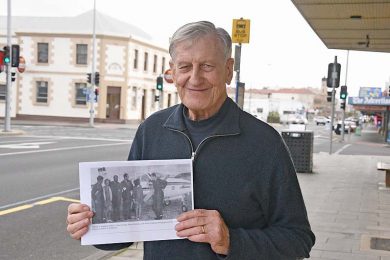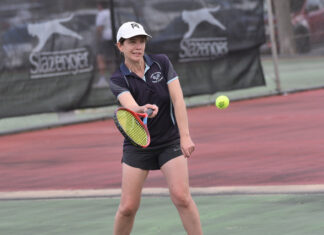
WITH the looming centenary of the Great Air Raced from London to Darwin, won by South Australian pilots Ross and Keith Smith, a Mount Gambier man has recalled how he retraced the flight path 50 years ago.
Former Royal Australian Navy navigator Peter Coulson, pictured below, took part in the 50th anniversary celebration race in 1969, which celebrated the Smith brothers’ efforts.
The Smiths were joined by mechanics Wally Shiers and Jim Bennett on the flight, which left London on November 12, 1919 and touched down in Darwin on December 10.
Their efforts resulted in knighthoods for the Smiths, along with a £10,000 prize originally offered by the Australian Goverment to entice a flight crew to complete the journey in less than 30 days.
Now 100 years on from the historic journey, their efforts are remembered across the nation with Mr Coulson recalling his own flight along the same path 50 years ago.
In 1969 it was announced a 50th anniversary celebration race would take place with pilots and other enthusiasts flying the same path as the Smith brothers.
Inspired by the iconic aviation moment, Mr Coulson discussed taking part in the commemorative race with a friend after hearing about the adventure.
“I was on leave in Melbourne when it was made public,” Mr Coulson said.
“I discussed it with a friend of mine I had previously flown with, however when we first began researching the idea nobody was interested in sponsoring just a couple of blokes.
“We did find one potential sponsor who claimed they would sponsor a navy team, so when I went back to work we put together a team and entered.”
Securing sponsorship from Philips Australia the team started to prepare for the trip.
“We went out and did the research into what the route was to retrace the actual flight trip made by the Smith pilots and worked out how we were going to do the race,” he said.
“We then picked out what we thought was the best airplane and started getting organised.”
With the race starting in London, Mr Coulson and his crew made their way to Athens, Karachi and Singapore before landing in Darwin.

“Although the original race ended in Darwin, the trip was extended through Australia to celebrate the South Australian history of the original pilots,” he said.
“We landed in Darwin before making our way to Alice Springs and Adelaide where we had a rest and waited for the rest of the fliers to land.
“We then had a short-distance race to Sydney to further celebrate the 200-year anniversary of Captain Cook landing in Australia.”
Mr Coulson said their lift-off was a strangely similar experience to that of the Smith brothers, with wild weather causing visibility issues.
“The weather and the clouds caused us to not be able to see much and it was not until we began to descend for our first fuel stop that we were able to see properly,” he said.
“It was great though because overall everything ran smoothly, but there were a few interesting times along the way.
“Over one link we had one of our engine instruments fail which was the start engines RPM gauges that told us how fast we were going.
“Luckily we were able to adjust the power of the second engine to the first by using our hearing which was how we knew it was alright until we could land.”
The navigator said once they landed in Singapore, the team decided it was a silly idea to keep flying with the failed instrument and fixed the issue before taking off again.
“We lost around 10 hours because of that and if we had of known we were doing so well in the race overall I think it would have been a different decision,” he said.
“But we were professionals, or at least we liked to think that we were.”
Arriving in Adelaide, the pilots rested before the short race to the New South Wales capital city.
“According to the Navy history books we placed 16th out of 90 overall, which I think was a great achievement,” Mr Coulson said.
“Especially considering the engine issues we faced along the way.”
Mr Coulson said the major difference between their trip and the Smiths was technology, as someone always knew where they were and what was happening.
“This was not the case back in 1919 because the Smiths would have to cable in their next expected stop and let them know they were on their way,” he said.
“This is how they would organise fuel and other things needed for the next link.”
With his interest in flying developing from the age of 12, Mr Coulson said it was something as simple as a trip in a crop duster in the countryside that sparked his passion.
“Not long after I took the trip in the crop duster I decided I wanted to fly,” he said.
“Although my skills at flying were never the best, I did fly with someone else.
“Fortunately the Navy took me on as a navigator which worked out quite well.”








